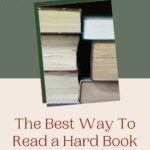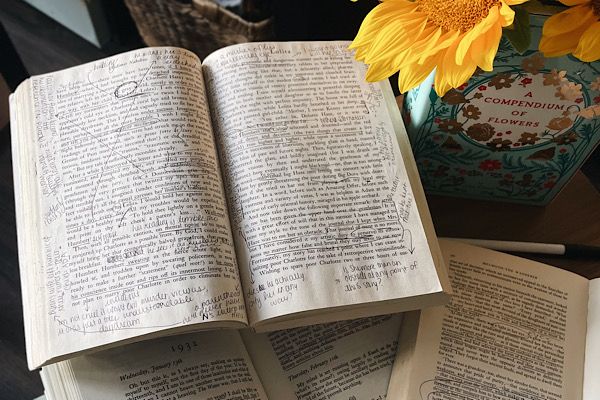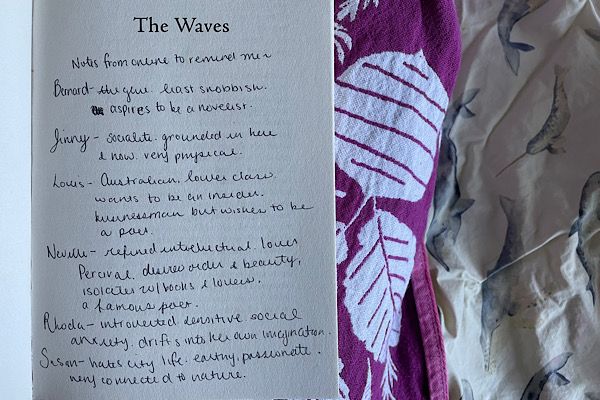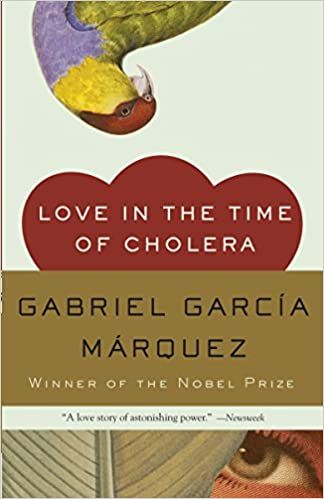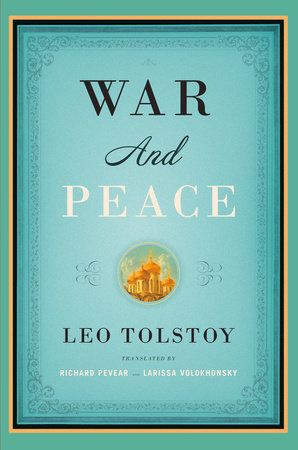That’s what I’m here to help with. Because I’ve thrown myself into a lot of books that were too hard for me, and come out the other side. In my senior year of high school, I decided to read Ulysses by James Joyce solely because my favorite English teacher loved Joyce. With no preparation, no knowledge of references, nothing, I just kind of dove in. I didn’t understand it all, but I finished it, and enjoyed it. I truly believe that it’s our gatekeeping of the classics, our pressure to take them so intensely seriously, that makes hard books feel so inaccessible, when truthfully, most of us have the capacity to read anything we want to. So, as an expert in the long, twisty, and ambiguous, I’ve brought all my tips, tricks, and mastery to this article to help you jump into that intimidating book on your shelf, or that terrifying book that your teachers want you to be able to discuss on Tuesday that you are just not understanding. Let’s get started!
TIP 1: Annotate
If you can get a copy that you can own and write on, fantastic. If not, invest in a hefty number of post-its, because you’re going to want to write on this book. A lot. You want to be able to see your notes on the page, to be able to flip through the book and see all your notes as you go. To see, easily, exactly the passage you’re referring to. There’s a big pressure to have annotations be meaningful. They do not have to be. Sure, some of them can be definitions of words or phrases you don’t know, or historical tidbits pulled from the footnotes of the book (if you don’t know a name or event, check to see if the book has notes in the back!). But they can also just be for you. Write reminders to yourself (“Joe = brother of Jack, dating Julie”). Notice that butterflies keep popping up? Mark every mention. If an idea or connection sparks in your head, write it down. If you see that a woman is wearing white and wonder what it means, and then later you see someone else in the same dress and it seems to mean X, you’re going to want to be able to find your note on that first time the dress showed up. Also, writing notes just helps you remember what you’re reading. And while you might think your insights are small, tiny notes in the margins, and question marks, and little weird connections, are where all the big literary critics start too. So dive in — and have fun! Joking around will honestly help you remember the events of the novel, or the intentions of the characters. Add hearts next to your favorite lines! Use different color highlighters! “Roast him!!!”, “girl you are looking extremely suspicious right now”, “oh honey”, “oof that one hurt”, “GAY”, and “SHUT UP JERKFACE” are all real annotations I have written in the margins of novels.
TIP 2: Keep Reference Notes Separate
Consider having a notebook or a few sheets of paper on hand as references for yourself — you can also write these things on the endpapers of the book, but I like to have them separate so that I can use them without flipping back and forth. Things to keep on a separate sheet:
TIP 3: Reading Alongside SparkNotes
In 2013, I read Love in the Time of Cholera by Gabriel García Marquez completely in Spanish (El amor en los tiempos del colera). I had taken up to Spanish 202 and was good with context clues, but to answer your question, no, I am not fluent. It was an ambitious undertaking, and I don’t remember exactly why I decided to do it, except that I was determined to get Marquez’s language straight from the source. In my high school days, SparkNotes was framed incorrectly as this way to cheat your way out of reading the classics. But in truth, SparkNotes is an extremely valuable resource that used properly is a guide and assistant to literature. So utilize it! Here’s how I did it: at the end of each Cholera chapter, I would close the book and read the SparkNotes summary of that chapter. It would fill in all the gaps — the details I missed, the plot I thought I understood but honestly wasn’t 100% sure on. If I had completely missed everything that had happened, sometimes I would read the chapter again, now armed with the basic details I needed to guide my way. This is great for all tough books, whether it be the language or the plot that’s tripping you up. I recommend reading the chapter first, SparkNotes second, and then potentially the chapter again, but if you’re not bothered about spoilers, or are feeling particularly lost, you can also read the summary first to give you those larger, big-picture ideas of what’s happening, which will then allow you to better appreciate what’s going on as it happens in the novel.
TIP 4: Read in Bursts — and Take Your Time
When I signed up for a college course reading War and Peace by Leo Tolstoy, translated by Richard Pevear and Larissa Volokhonsky, I was a little intimidated. I mean, even as a fast reader, 1300 pages in 10 weeks sounds like a lot. But then my professor talked us all down: he would be asking us to read 75 pages for each class. 150 pages a week. Yes, that’s not a small number, but it’s a lot less. In those increments, this famously long text suddenly felt kind of reasonable. Especially if you’re reading an intimidating text for fun or for your own use, remember that there is no pressure to read it in one huge burst. Take breaks. Hell, put it down for a few days and barrel your way through a short, easy, fun novel, and then come back. (Just don’t leave for so long you forget what you’ve read so far.) Obviously, if you’re reading this for a class or assignment, this is harder to do, but you can still use this strategy. Instead of sitting down to read half the book in one go, set the goal of reading a single chapter, then take a short break before reading the next. Tell yourself to read 50 pages at a time, or 10 pages, or 5. It will make the text feel substantially less intimidating and overwhelming to break it up into small pieces.
Tip 5: Be Kind to Yourself
I just wrote a whole essay about how to read difficult books. Because some books are really hard to read. And yes, some people have breezed through them. But chances are, that’s because they used some of these techniques, or had more practice, or had the help of teachers or other forms of support. So be patient with yourself. The best way to not be able to read one of these books is to tell yourself you can’t read one of these books. And finally (if you’re not reading a book for class, please don’t get me in trouble with your teacher), it’s okay to give up at a certain point. And it’s okay to hate one of these big ol’ intimidating tomes. Seriously, it is. The goal is not to make you go read books that are hard to read. The goal, for me, is to encourage you not to avoid reading them only because they’re so hard to read. So if you want to read War and Peace, but are too stressed about it? Read it with these tips, and hit me up on social if you get nervous, because you’ve got this! If you have zero interest in reading it but some person keeps telling you that you have to read it, it’s so important to the canon, etc., etc.…Don’t read it. Give it away instead. Life is too short for that nonsense.
